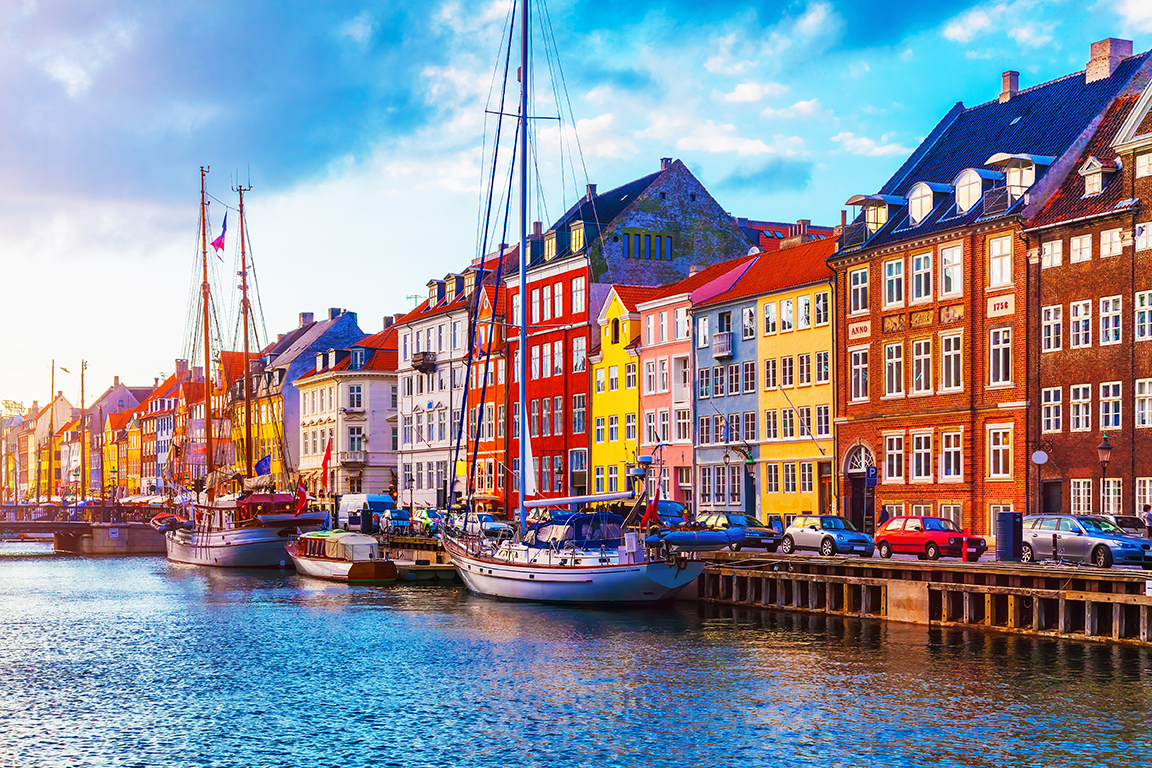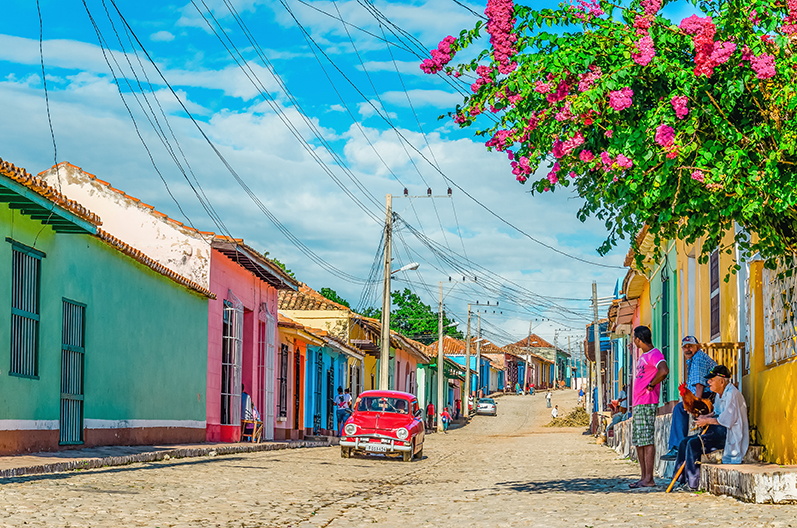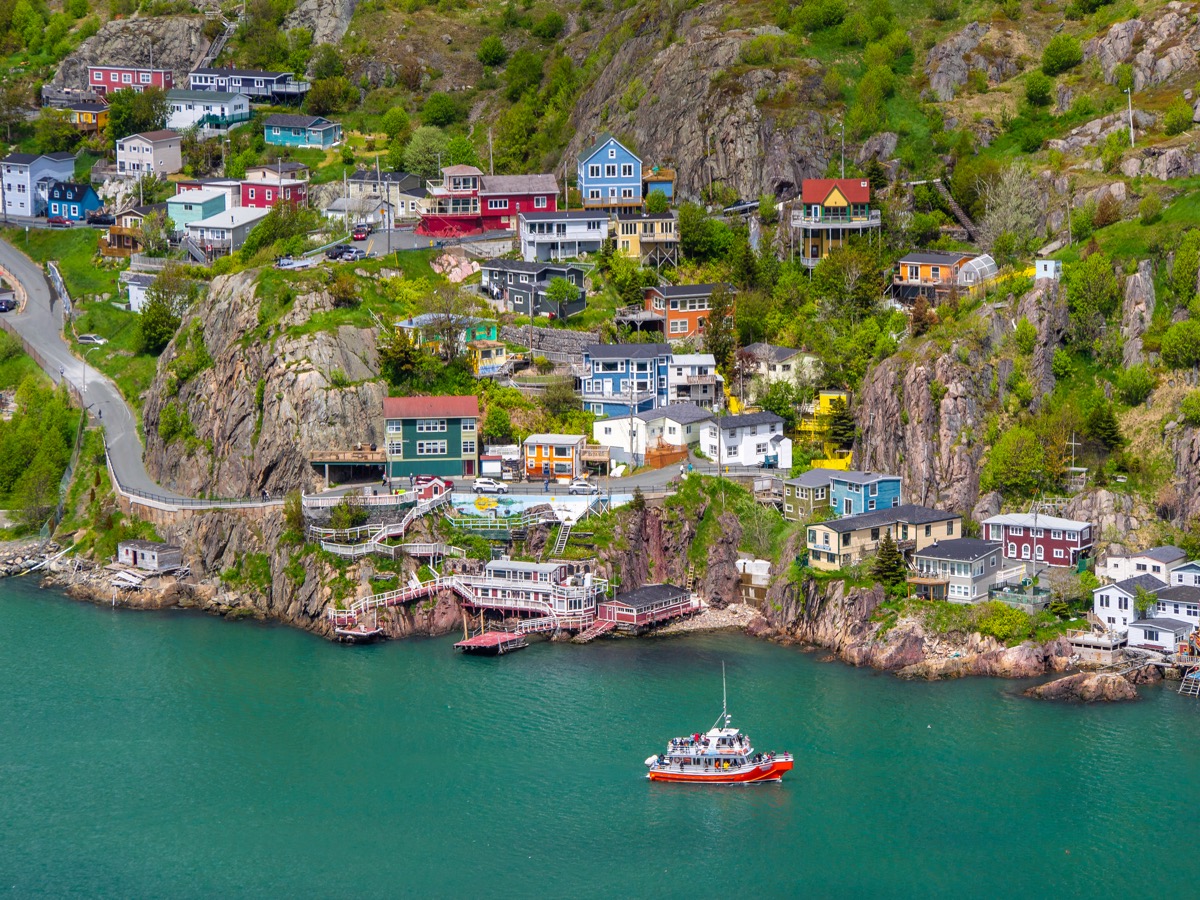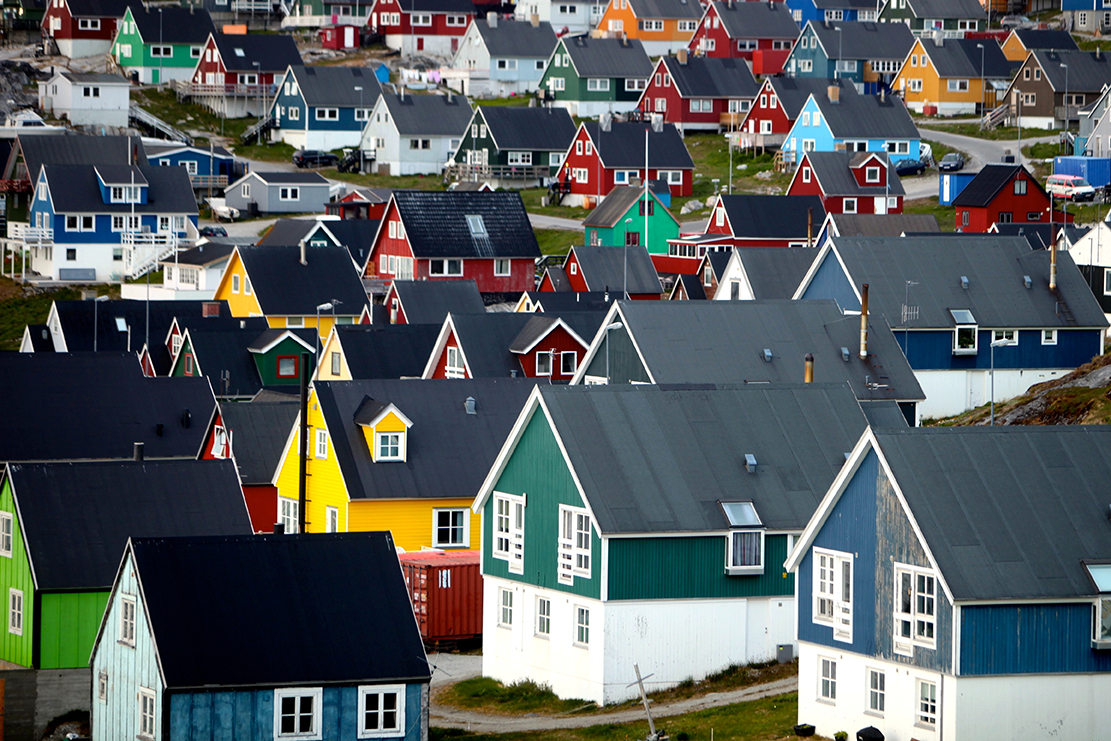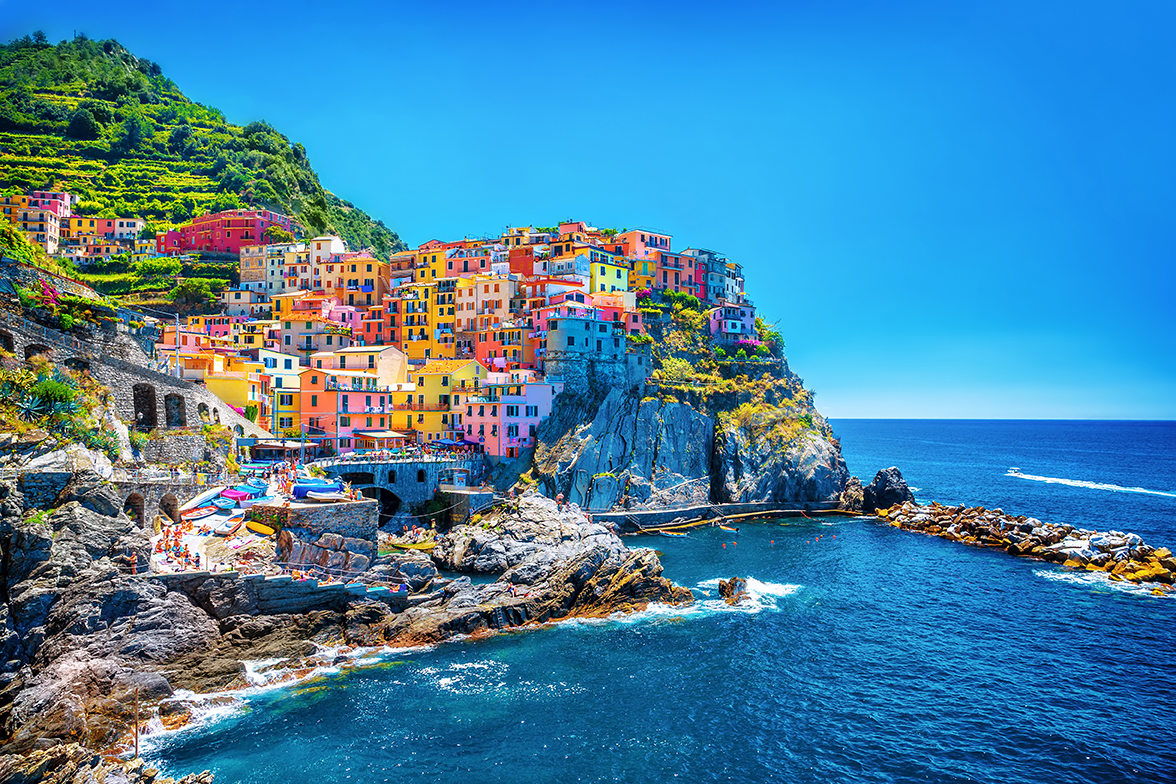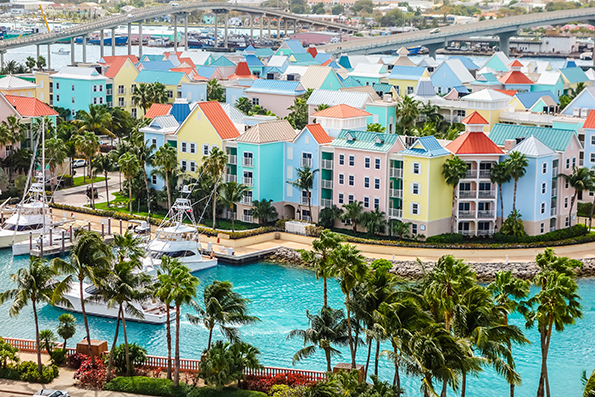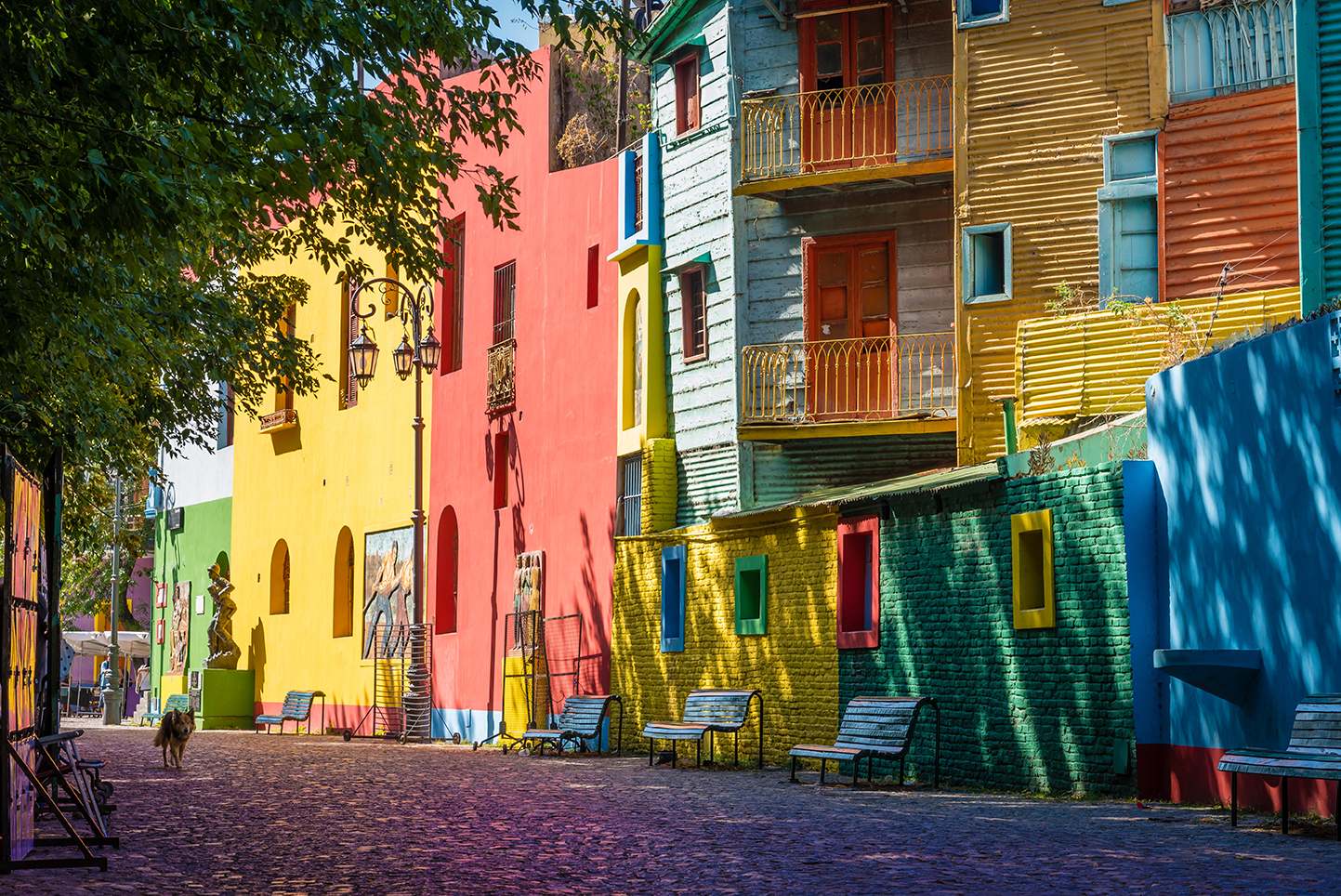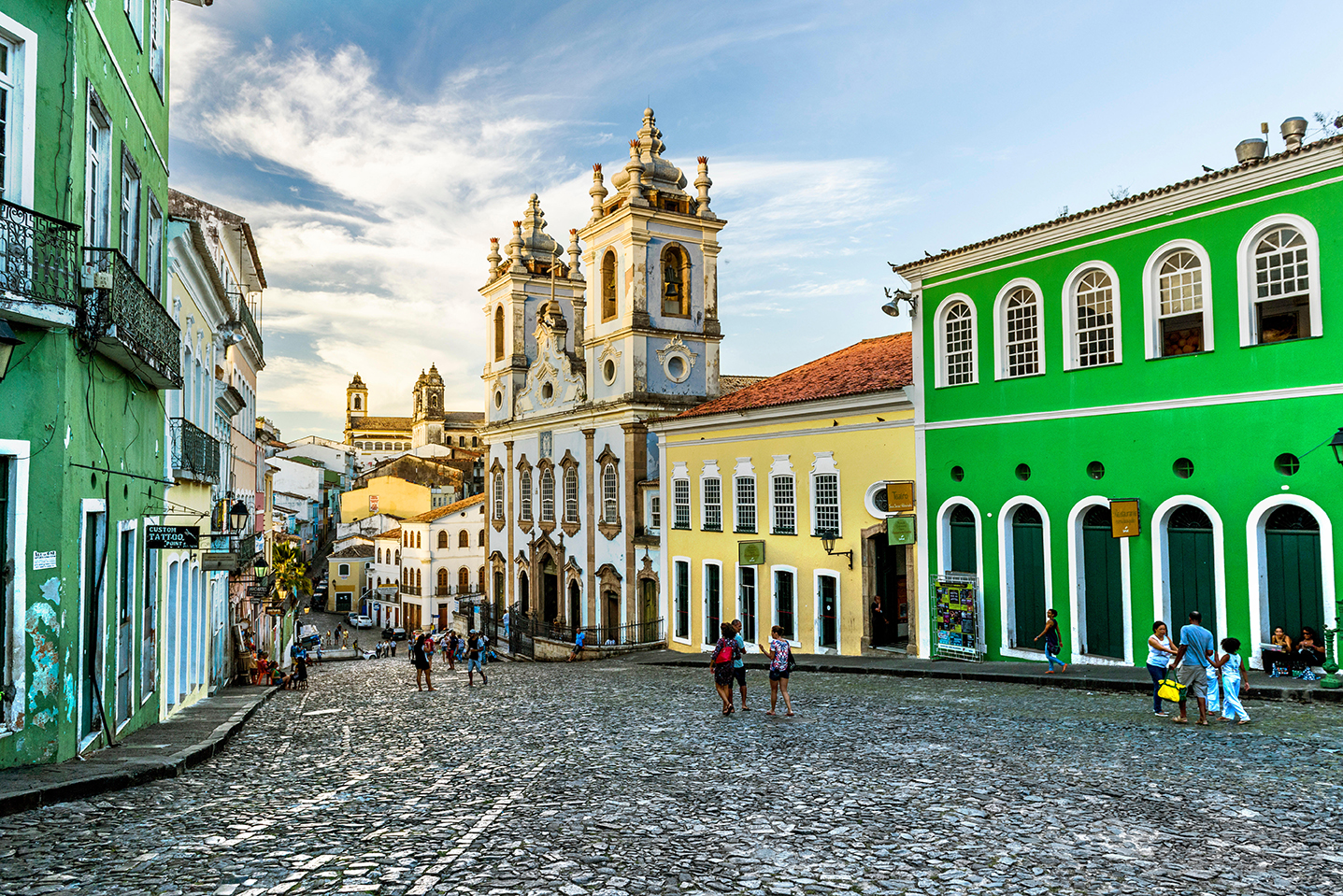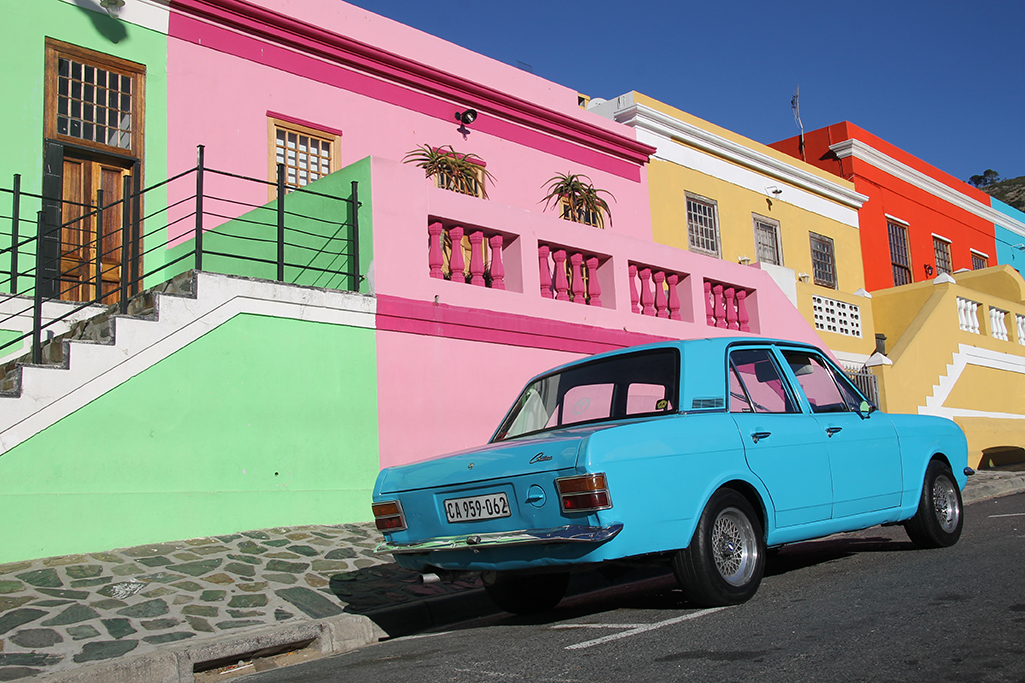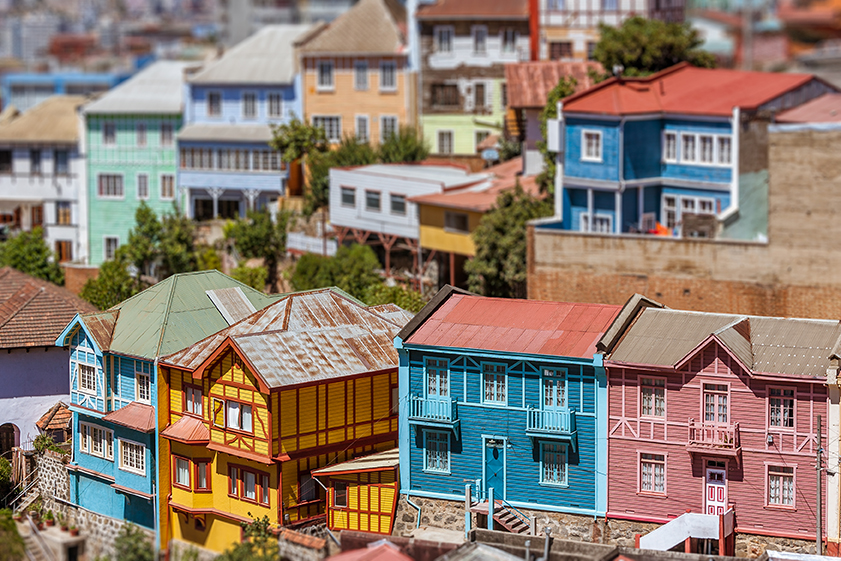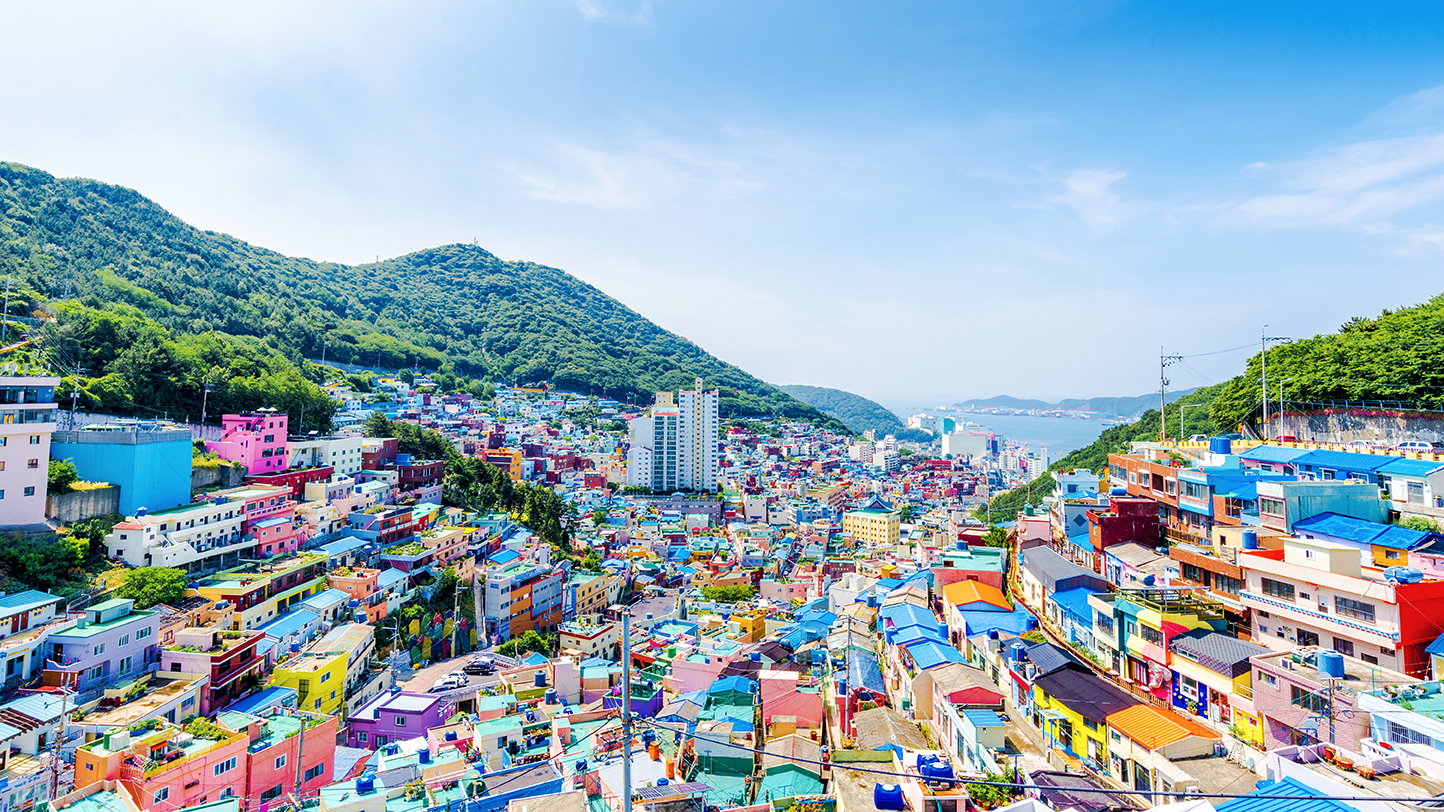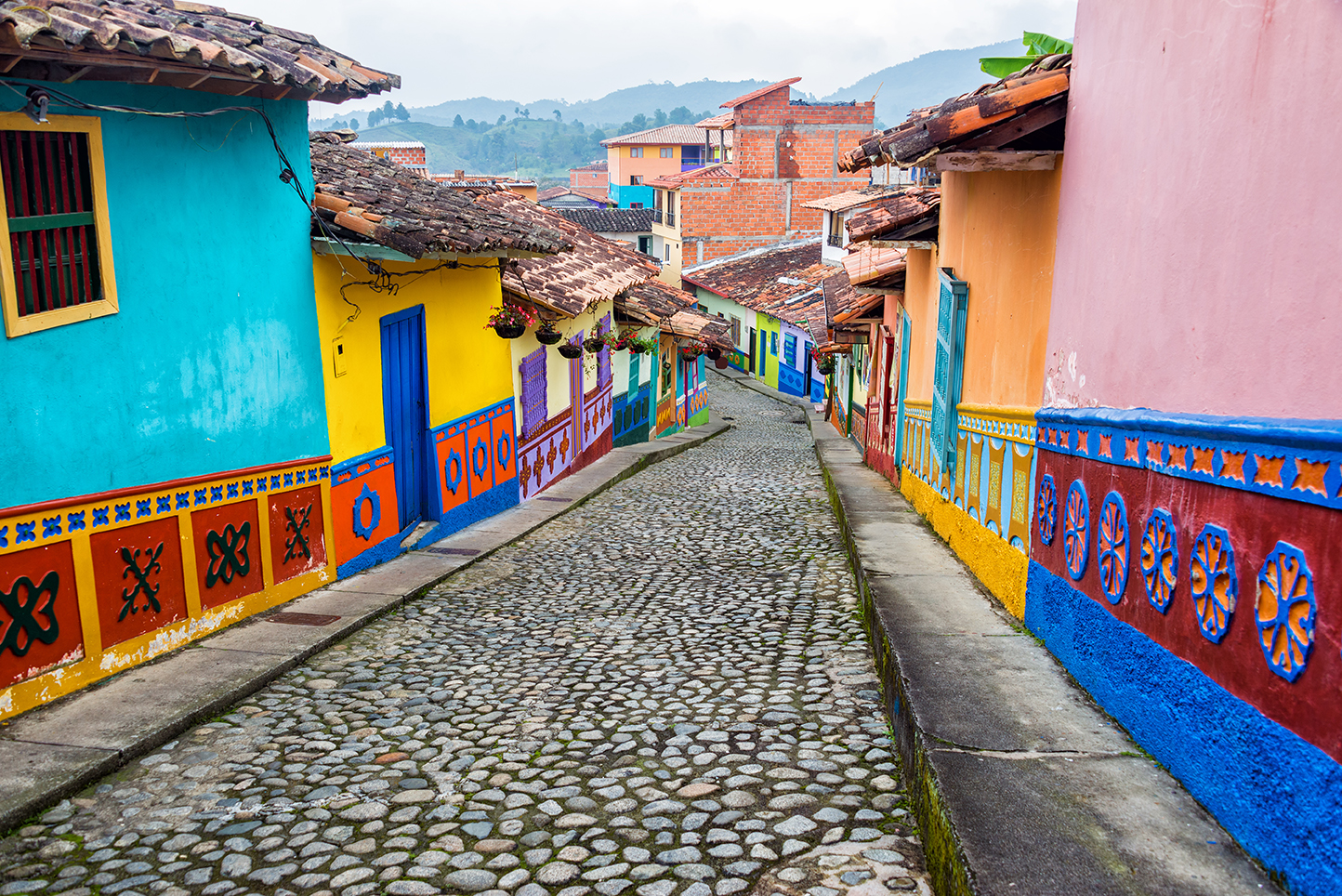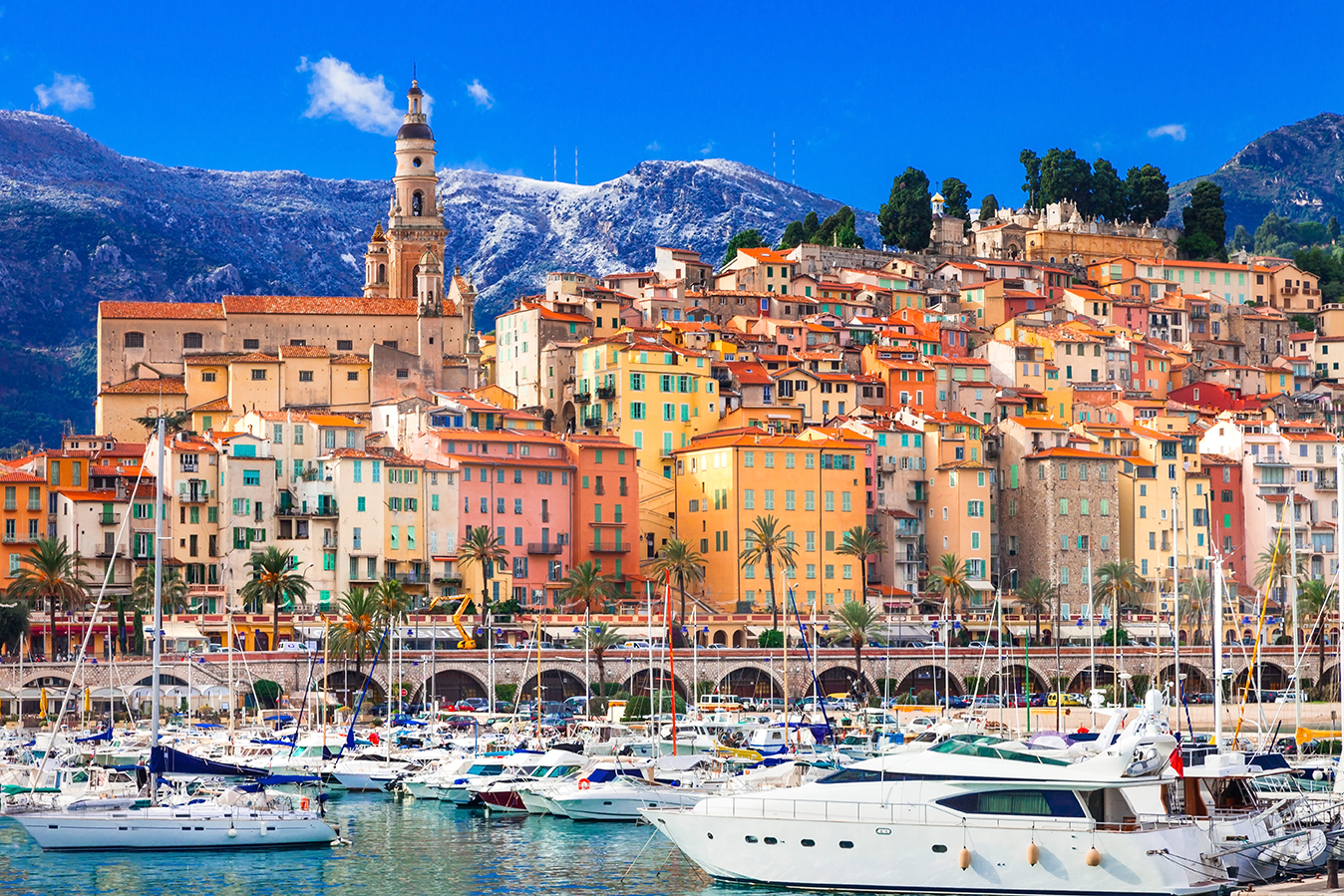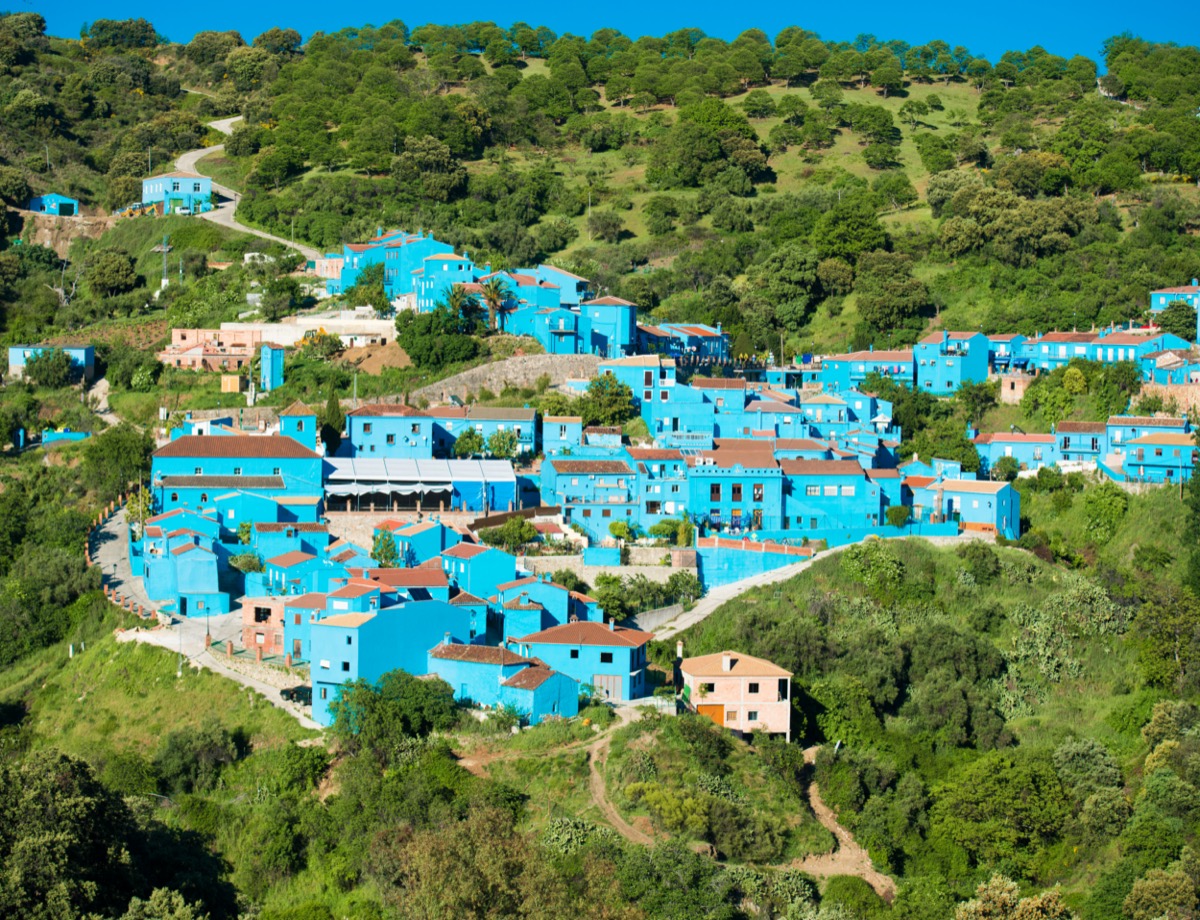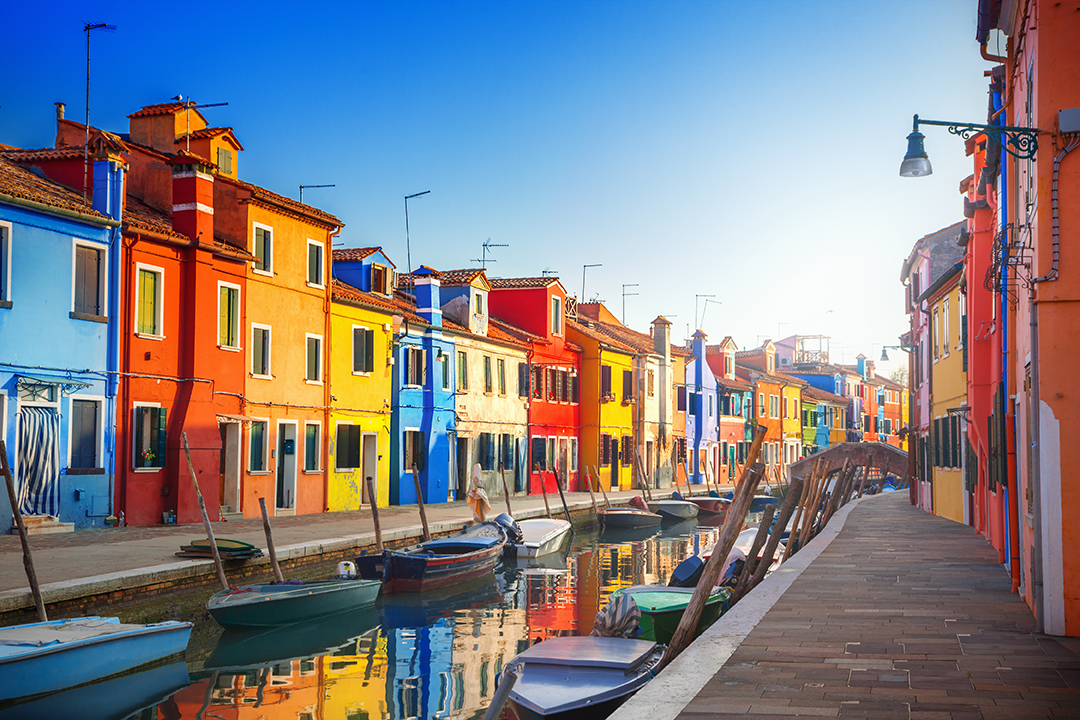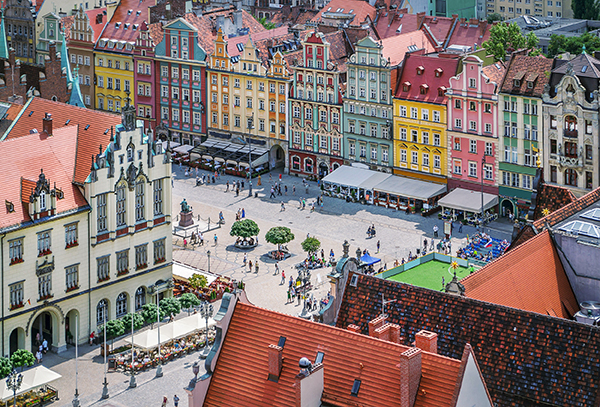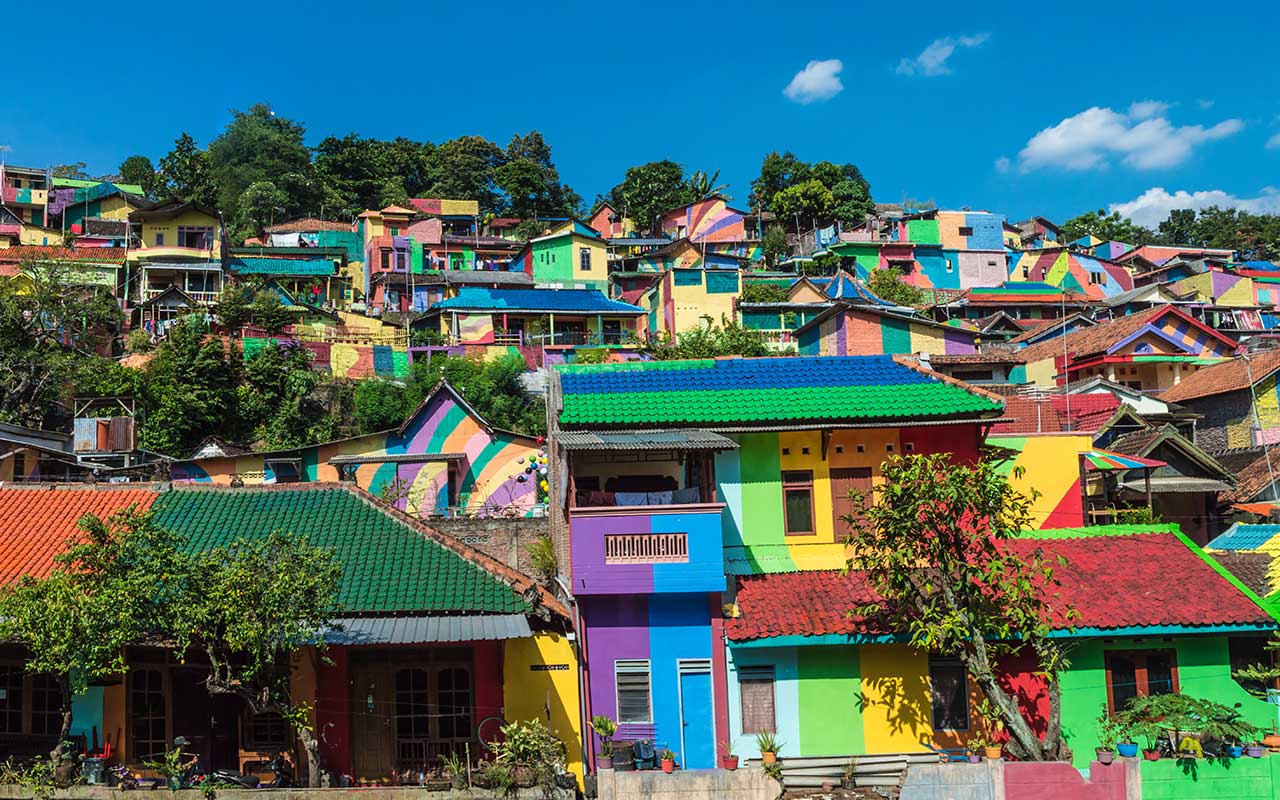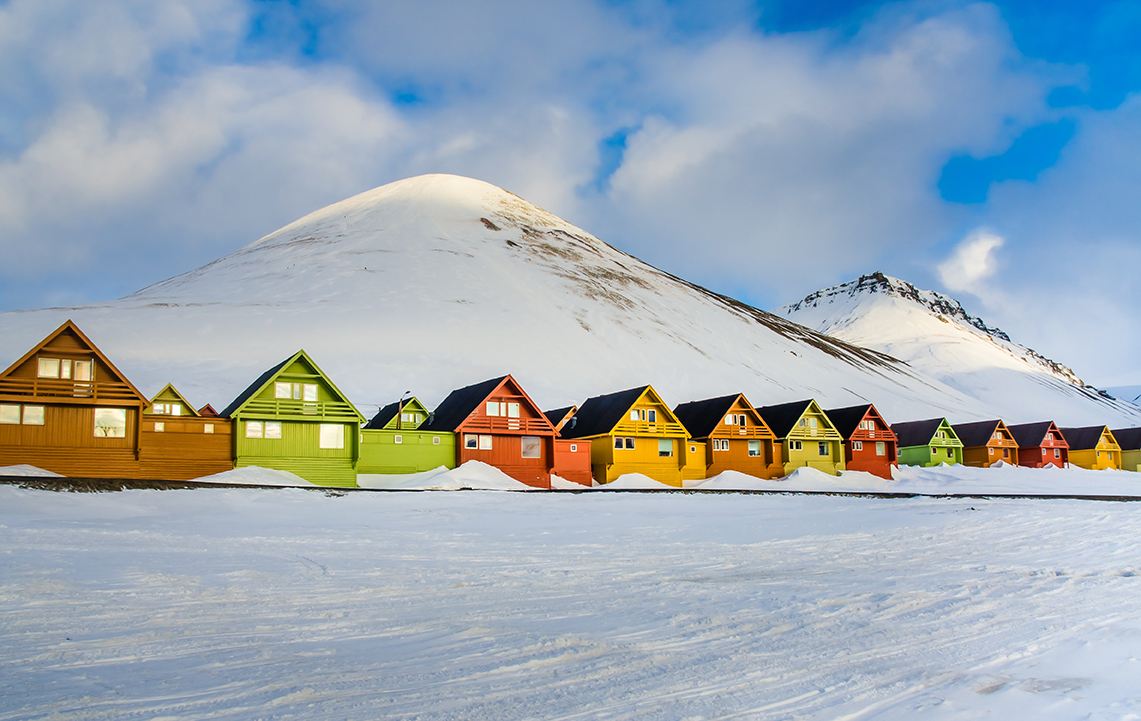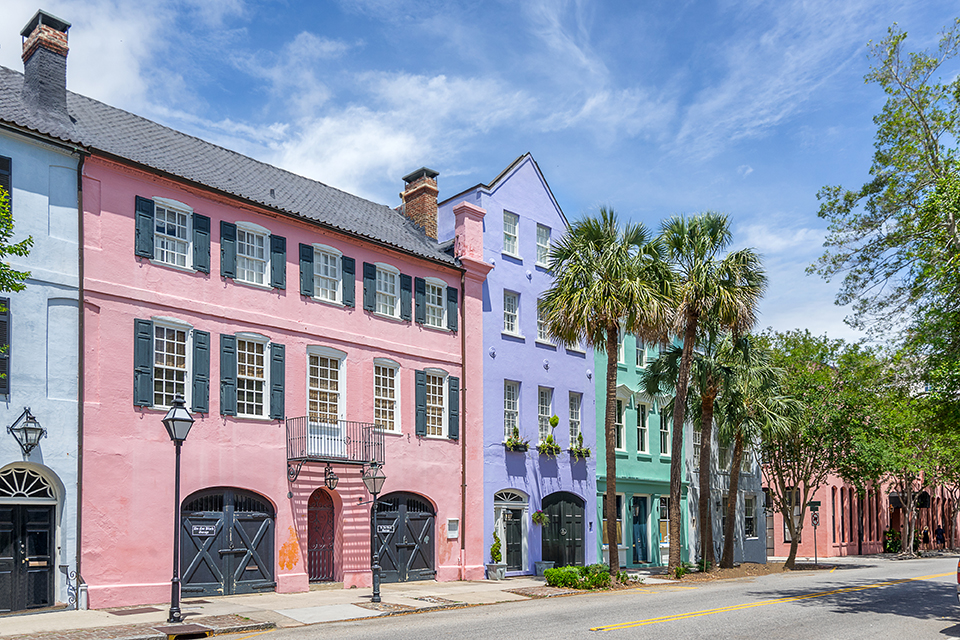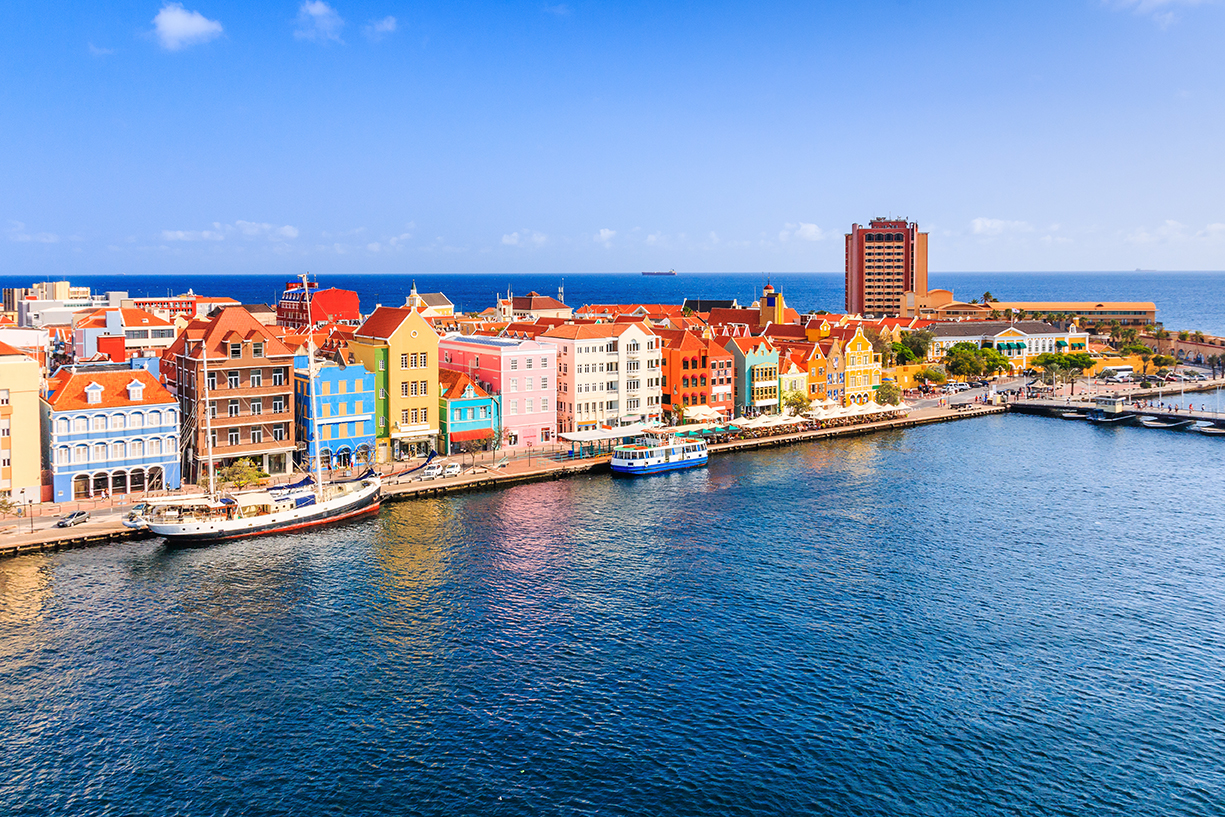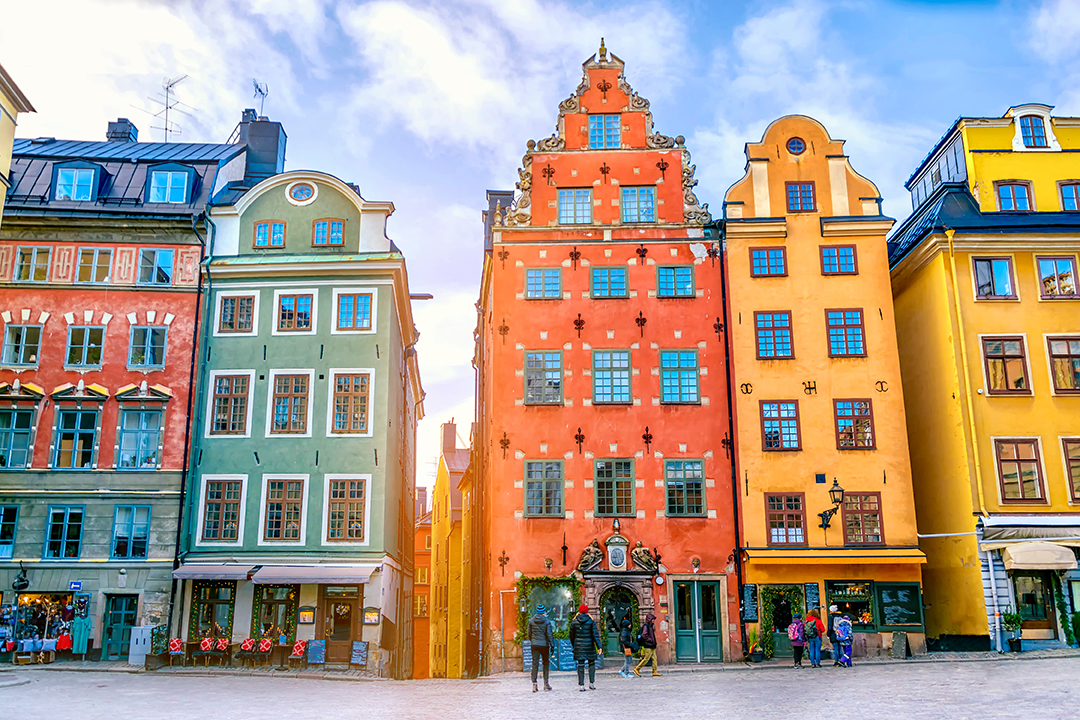Once a commercial port that drew sailors from across the world, Nyhavn is now lined with colorful 17th-century buildings that house restaurants and cafés along its waterfront. The canal looks like a magical wonderland, so its no surprise that author Hans Christen Anderson—who lived in three different homes here—used it as inspiration for his famous fairy tales. This UNESCO World Heritage Site feels like it’s stuck in time. Located in central Cuba, this well preserved, 500-year-old colonial town boasts colorful Spanish architecture, cobblestone streets, and the classic cars Cuba has come to be known for. With a name like Jellybean Row, the homes dotting St. John’s steep hills are as lively and cheerful as you’d expect. Located on the Avalon Peninsula’s northeast coast, the lore behind the city’s bright houses is attributed to fishermen who wanted to see their homes through the fog as they approached the harbor. Of course, the real truth is less romantic: The bold palette began in the 1970s as a way to revitalize the downtown area. Nestled in the Rif mountains of northern Morocco, this maze of alleyways boast electric shades of blue. There are many theories as to why the town is painted in this way, such as to follow Jewish custom, to keep the mosquitos away, and to represent the cerulean sea, but the full story behind this “Blue Pearl of Morocco” remains a mystery. This former silver mining city is surrounded by the Sierra de Guanajuato mountains. A city rich in history, architecture and of course, color, it’s considered one of Mexico’s most romantic destinations. Here, you can wander the cobblestone streets that wind up along the hillside and through tunnels that were once rivers. The capital of Greenland features a dense cluster of picturesque wooden homes, whose pigments initially had a practical function as a means to tell them apart. Police stations were black, hospitals were yellow, fish factories were blue, and commercial homes were red. You’ll also want to visit the Hans Egede House, the oldest in the country (built in 1728), and named for the city’s founder who also resided there. Cinque Terre is a collection of five seaside enclaves that proudly display rainbow abodes atop cliffs overlooking the sea. Each of the communities has its own special charm and are accessible via walking paths, such as the popular Via dell’Amore (the Way of Love), which connects Riomaggiore to Manarola. There are also boat shuttles that operate between each town. From soft pastels to tropical tints, Bahamian homes are anything but boring. However, it’s not just the private estates that enjoy a rich palette, as a trip to Parliament Square reveals. The colonial-inspired Senate, House of Assembly, and Supreme Court buildings are all painted a vivid shade of pink. In a country where tango rules the night, the neighborhood of La Boca is worth a day-time visit. When immigrants first settled here, they painted their homes with whatever dyes they could find at a nearby dockyard. The result of this piecemeal effort is a visual feast. Today, the colors extend to chalk sidewalk designs and dazzling murals. Salvador is the epicenter of the country’s vibrant Afro-Brazilian culture and a showcase for the beautiful colonial architecture of the 17th and 18th centuries. It blends historic gold landmarks with modern neon façades to create a surprising but seamless aesthetic. Although Rio is the more popular tourist destination, this tranquil city delivers all the same magic—minus the crowds. The journey to today’s Bo Kaap has been a complex one, complete with multiple name changes, a rich past that includes South Africa’s very first mosque, and a successfully mounted defense against Apartheid. The brilliant neighborhood draws sightseers in for photo ops, but its historic significance leaves a much more lasting impression. Overlooking the ocean, Valparaiso is one of the most creative cities in South America. Here, art exists on every corner: in countless murals splashed across the sides of commercial buildings and in the gemstone-colored hillside homes. It’s easy to understand why Valparaiso is called “The Jewel of the Pacific.” The eye-catching patchwork of colors this village has become known for wasn’t always a part of its fabric. Established in the 1920s and 30s, it was initially used as a place to house poor Koreans away from the city center but close enough to still provide labor. In 2009, in a bid to reinvent and refresh the village, the homes and buildings were all given a fresh coat of paint in an array of colors. The revitalization has been very successful, drawing an array of artists, craftspeople, and creative types to move in and open galleries, studios, and coffee shops. Today, this Lego-looking neighborhood is one of the most popular attractions in Busan. This Andean resort town just might be the most colorful in all of Colombia. With a gorgeous collection of brightly painted bas-reliefs, the design of the homes and shops in Guatapé feel lovingly designed, with combinations that pop right off the walls. This punchy French Riviera gem is located on the border of Italy and marks a halfway point between Paris and Rome. Nestled between a mountain range and the azure Mediterranean Sea, the vibe of this city differs greatly from its neighbors Cannes and Monte Carlo. Forgoing the opulent glitz and glamour, for a more authentic experience and a warm palette of neatly stacked buildings. This village really hit its stride when it leaned into a promotion of the 2011 movie, The Smurfs. Originally a colony of whitewashed buildings, Sony España painted the entire area sky blue in celebration of the film’s premiere, and the influx of visitors convinced the town to remain that way indefinitely. A quick day trip from Venice, the whimsical canals on this island offer a slightly different experience. Lined with fishing boats and a gleaming spectrum of homes and shops, these waterways offer the ultimate photo op. And in the evening, you can review your snapshots over the day’s fresh catch. The largest city in Western Poland, Wrocław boasts one of the most impressive medieval market squares in Europe. As 70 percent of the urban area was destroyed in WWII, much of the market square had to be rebuilt in 1945 to its former glory. With contrasting paint and trim colors, the restaurants and townhouses that line the plaza are a reflection of its creative and youthful culture. It took a little more than a month to completely makeover Semarang in a bid to attract tourists. With more than 200 rainbow houses spanning two neighborhoods, the kaleidoscopic transformation has proven to be a big hit with people traveling to the city just for the chance to see it in person.ae0fcc31ae342fd3a1346ebb1f342fcb Longyearbyen—one of the Svalbard islands in Norway—is considered the northernmost city in the world, but that’s not its only claim to fame. It’s also one of the most chromatic thanks to its boldly painted wooden houses. This former mining community is now home to a population of around 2,000, including many young families. In a city that experiences polar night for four months out of the year, these lime green, mustard yellow, and firetruck red lanes are a cheery light in the darkness. Called Rainbow Row, this crop of Georgian homes in Charleston has been around since the 1700s—but they weren’t always so eclectic. Following the Civil War, the area was quite run down, and it was only after Dorothy Porcher Legge and her husband Judge Lionel Legge moved into the area in 1931 and decided to liven up the block, that the paint colors became brighter, and other homeowners began to follow suit. It may be hard to believe that Willemstad’s diverse assortment of Dutch-inspired businesses were once white. The legend goes that under the blazing Caribbean sun, the reflection off the buildings became blinding, and a local doctor suggested that the government require them to be repainted for the sake of the residents’ eyesight. Stortorget is the main square in Stockholm’s old town of Gamla Stan. Each year it draws tons of visitors for its food, crafts, charming Christmas market, and of course, the warmly hued historic buildings. Its most famous landmark is the cardinal red #20, which was built in the 1400s. And for more dreamy destinations, browse through these 27 Totally Insane Travel Photos You Won’t Believe Are Real.
